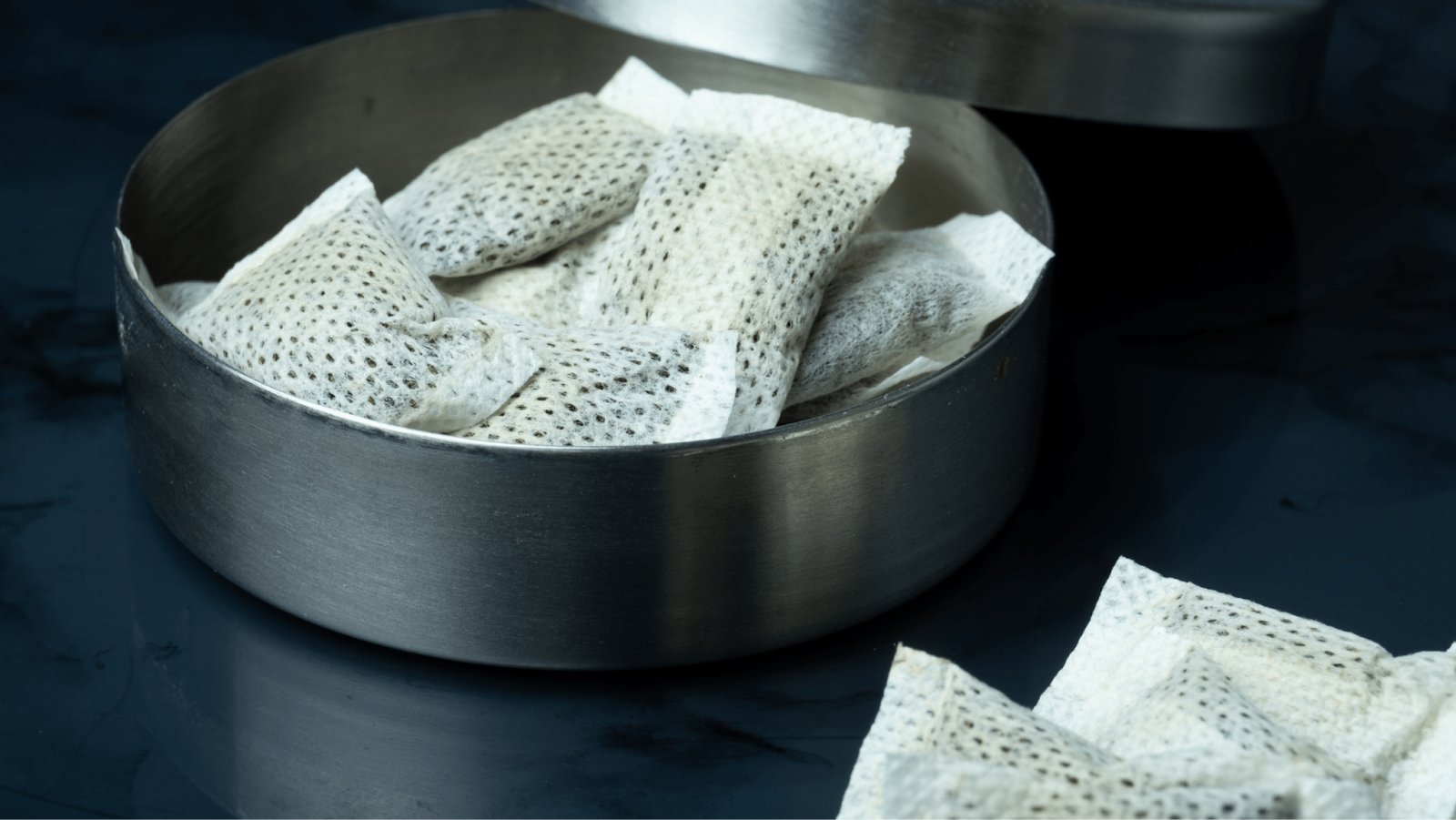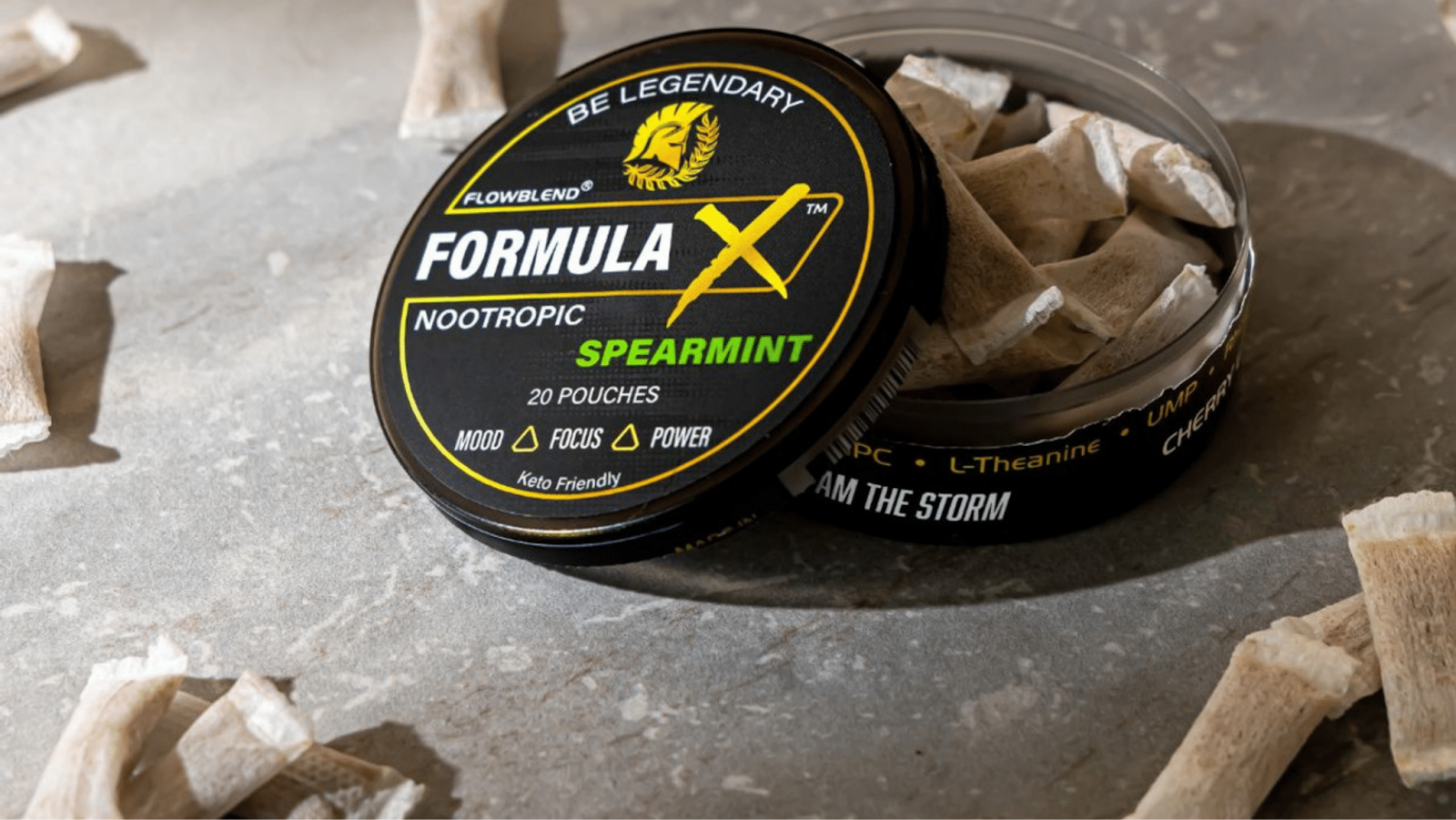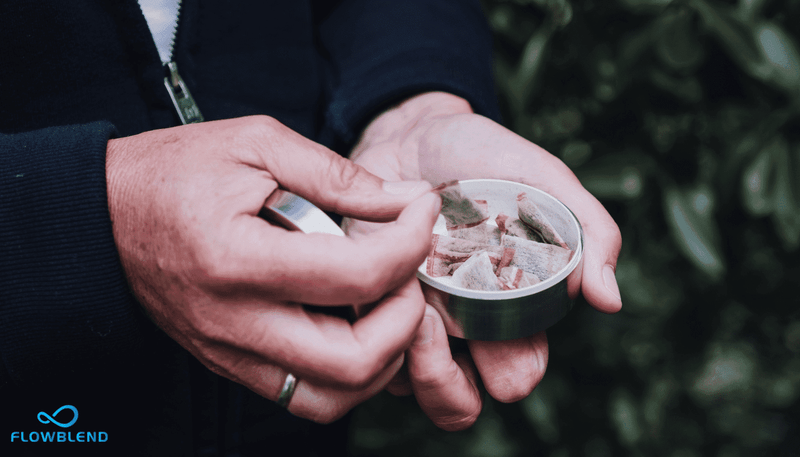Key Takeaways:
- Rituals Can Be Rebuilt: The act of reaching for snuff is more about routine than need. Replacing that ritual with something purpose-driven—like nootropics—puts you back in control.
- Real Clarity Starts Without Nicotine: Nicotine clouds more than it clears. Stepping away from snuff opens the mental space for sharper thinking, stronger focus, and better decisions.
- Quitting Snuff Builds Mental Grit: Saying no to snuff strengthens more than your willpower—it sharpens your mindset. Each day without it is proof that you're running on discipline, not dependency.
Think you’ve got it under control? Just a dip here, a pinch there—it’s not like it controls your life, right? That’s the lie snuff tobacco sells best. It masks itself as stress relief, tradition, even toughness. But behind the buzz is a slow grind that trades real power for a temporary hit.
At FlowBlend, we’re not here to babysit or play it safe. We build nootropic blends for men who want more—more clarity, more edge, more command over their choices. Built for focus and stamina, our formulas speak to those done with compromise and ready to push their limits.
In this piece, we’re breaking down what snuff tobacco is, why it’s hooked so many, and why walking away from it isn’t weakness—it’s strength.
Understanding Snuff Tobacco
Snuff tobacco is a form of smokeless tobacco made from finely ground or shredded tobacco leaves. It’s typically used by placing a small amount between the gum and lip (moist snuff) or inhaling it through the nose (dry snuff). Unlike cigarettes, it doesn’t require burning—but that doesn’t mean it’s clean.
Snuff is often considered a more “discreet” option, especially for men working long shifts, driving, or hunting. It fits easily into daily routines and rarely draws attention, making it feel like a low-key habit. But its subtle delivery keeps users reaching for the can without realizing how deep they’re in.
Despite the packaging, branding, and convenience, snuff tobacco is still a nicotine product, highly addictive and often overlooked. It’s a tool many lean on for stress, boredom, or energy, but it doesn’t offer real solutions. Over time, it takes more than it gives, and quitting becomes a choice rooted in self-control, not just health.

A Quick History Of Snuff Tobacco
Snuff tobacco isn’t new. It’s been around for centuries, tracing back to Indigenous tribes in the Americas who used ground tobacco leaves for spiritual and ritual purposes. European explorers caught on in the 1500s, and soon snuff became a global trend, first as something elite, then as something everyday.
By the 18th and 19th centuries, snuff had entered the working man’s world. It didn’t need lighting. It didn’t leave smoke. It became the go-to for those on the move—laborers, soldiers, adventurers—anyone looking for a jolt without the burn.
But as the world shifted, snuff stayed the same. Different packaging, same hook. Same cycle. It’s still pitched as tradition, but tradition isn’t a reason to stay stuck.
How Snuff Is Used Today
Snuff isn’t just a relic from the past—it’s still alive and kicking in break rooms, job sites, long-haul trucks, hunting blinds, and locker rooms. For many guys, it’s less about the nicotine and more about the ritual, the moment of pause, the sense of control. But make no mistake: even today, snuff still runs the same game, only dressed in newer packaging.
- The Everyday Fix in Blue Collar Culture: Snuff becomes part of the routine on work crews and shift jobs. It’s discreet, has no smoke, and is easy to use—and it fits right into a break between tasks. But that convenience masks how tightly it weaves itself into your workday mindset.
- The “Calm Down” Dip: Stress hits, and the instinct kicks in—reach for the can. That pause feels like control, but it’s just a reaction on repeat. Instead of real calm, it reinforces the belief that you need something outside yourself to breathe easy.
- The Weekend Warrior’s Edge: From backcountry trails to long drives and solo missions, some guys reach for snuff thinking it’ll keep them sharp. But it’s not clarity—it’s habit cloaked as preparedness. Over time, it chips away at the edge it promises to enhance.
The Hidden Costs: Health Risks And Side Effects Of Snuff
Snuff tobacco might not involve smoke or flames, but that doesn’t mean it’s off the hook. The costs often hide in plain sight—masked by routine, stress, and a craving that’s easy to excuse but hard to escape. Here’s how snuff quietly takes more than it gives:
Your Focus Slips—But You Don’t Notice At First
Snuff tricks you into thinking it sharpens your edge, when in reality, it hijacks your baseline. That “lift” you chase slowly becomes your normal, which means your true clarity fades without you even realizing it. What started as a boost dulls the sharpness you’re trying to maintain.
Cravings Creep Into Your Routine
It doesn’t take long before you plan your breaks, drives, and even your meals around the next dip. You stop calling the shots—nicotine does. That subtle pull becomes a leash, even if dressed up as control.
Your Energy Isn’t Yours Anymore
Snuff can give the illusion of stamina, but it’s a cycle of peaks and crashes. Real energy doesn’t come from something you must feed every few hours. Over time, you're not running on fuel—you’re just chasing fumes.
Stress Relief Becomes A Dependency
The ritual of dipping to “calm down” becomes more than a habit—it’s a dependency you lean on every time life turns up the pressure. It teaches your body that you need something external to decompress. That cycle rewires your reaction to stress instead of building real resilience.
You're Trading Long-Term Power For A Short-Term Hit
Snuff sells comfort in the moment but subtracts from your strength over time. You lose your edge not all at once, but piece by piece. And one day, it hits you: you're not in charge anymore.

The Shift: Men Ditching Snuff For Performance And Clarity
A new wave of men waking up to the truth: Snuff doesn’t build you—it just keeps you stuck. The shift isn’t about weakness; it’s about stepping into something stronger. When you quit nicotine, you don’t just drop a habit—you reclaim clarity, control, and stamina that lasts.
Performance Demands More Than A Crutch
You can’t build strength on something that’s silently draining it. Snuff feels like it gets you through the day, but it's just covering up that you're not performing at your real level. When you drop the crutch, your body starts operating as it was built to—on its own terms, at full capacity.
Clarity Isn’t Found In A Can
Snuff clouds your mind with short spikes and longer slumps. That mental fog becomes normal, and you forget what it’s like to think fast and move with purpose. Clarity returns when nicotine is out of the picture—and when it does, it’s a whole different gear.
Momentum Builds When You Break The Habit
The first day off snuff might punch back, but the next one feels lighter. Every moment you hold the line builds into something powerful—less stress, better sleep, sharper energy. You stop reacting and start moving with momentum that doesn't quit when the buzz wears off.
Identity Shifts With Action
You’re not just a guy who “used to dip”—you’re the guy who took the wheel and changed the trajectory. You reinforce a mindset built on purpose and grit whenever you refuse to reach for the can. That’s not just quitting—that’s upgrading who you are.
How Nootropics Help You Stay Sharp, Energized, And In Control
There’s power in replacing a crutch with a tool—especially one built for clarity, stamina, and self-mastery. Nootropics don’t numb or distract; they’re designed to elevate your mental game. When you're off the nicotine rollercoaster, these smart compounds become a clean-burning fuel for what’s next:
- Focus Without the Fog: Nootropics help support a clear, sustained mental state—no crash, no cravings. You’re not chasing the next high; you’re dialed in from the start. It’s about showing up sharp, every time, without needing a dip to kickstart your brain.
- Clean Energy That Doesn’t Own You: Energy from nootropics feels different—it’s steady, not spiked. You’re not getting yanked around by a substance that takes more than it gives. You’re in control, not trying to survive the next slump.
- A Habit That Builds You Up, Not Breaks You Down: The ritual of taking nootropics isn’t about feeding a need—it’s about choosing growth. Each time you take them, you’re reinforcing a mindset of performance, not dependency. And that shift—from coping to climbing—is where real momentum begins.
- Discipline Over Dependency: Nootropics support your goals—they don’t hijack them. Instead of pulling you into a cycle, they become part of your daily discipline—fuel for the guy building something bigger. This isn’t about replacing one habit with another—it’s about choosing tools that respect your direction.

Final Thoughts
Snuff tobacco sells the illusion of control, but in reality, it’s a slow surrender—one pinch at a time. It’s marketed as tradition, stress relief, and an edge, but it quietly robs you of clarity, stamina, and autonomy. Real strength isn’t in keeping the ritual alive—it’s in breaking the cycle and choosing something better.
At FlowBlend, we don’t believe in settling. Our nootropic blends are built for the man who’s done trading long-term potential for short-term fixes. Walking away from snuff isn’t about giving something up—it’s about stepping into who you’re meant to be: sharper, stronger, and fully in control.
Read also:
- Are Nicotine Pouches Cancerous? What To Know
- Do Nicotine Pouches Damage Your Lungs?
- Do Nicotine Pouches Damage Gums?
Frequently Asked Questions About What Is Snuff Tobacco
Is snuff tobacco legal in the United States?
Yes, snuff tobacco is legal and regulated by the FDA. However, it comes with mandatory warning labels due to its addictive nature. While it’s sold in many convenience stores, its legal status doesn’t mean it's risk-free.
Can snuff be used without nicotine?
Traditional snuff contains nicotine, but there are tobacco-free alternatives available. These are often marketed to users trying to quit. However, many still mimic the ritual, which can continue the psychological dependence.
Why do some athletes or outdoorsmen use snuff?
Some use snuff for convenience and a perceived energy boost during long physical activity or stressful moments. It doesn’t require lighting and can be used discreetly. But those reasons often mask an underlying dependence on nicotine.
Is there a difference between dry snuff and moist snuff?
Yes—dry snuff is usually inhaled through the nose, while moist snuff is placed in the mouth between the gum and lip. Moist snuff is more common today, especially in the U.S. Both forms deliver nicotine through absorption rather than combustion.
Can snuff tobacco stain teeth or affect oral hygiene?
Yes, frequent use can lead to discoloration of the teeth and gum irritation. It may also affect breath and increase the presence of plaque over time. While some users think it’s cleaner than smoking, it still leaves its mark.
Does snuff help reduce anxiety or stress in the long term?
Many believe snuff helps them calm down, but that’s typically short-lived. It creates a cycle where stress relief depends on nicotine intake. Long-term calm comes from breaking that cycle, not feeding it.
Is it easier to quit snuff than cigarettes?
Quitting snuff can be just as challenging as quitting cigarettes because the nicotine levels are often similar. The lack of smoke doesn’t reduce addiction. Its subtlety can make it easier to overlook how much you're using.
Are there withdrawal symptoms from stopping snuff?
Yes, users may experience cravings, irritability, headaches, or fatigue after stopping. These symptoms vary in intensity but typically fade after the first few weeks. Supportive habits and tools like nootropics can help maintain clarity and energy during that shift.
Why is snuff still popular if people know it’s addictive?
Snuff has deep cultural and generational roots, especially in certain industries and communities. It’s often seen as a lesser evil compared to smoking. That perception, combined with habit, keeps many users hooked longer than they realize.
What are better alternatives to snuff for focus and stamina?
Nootropics offer a non-addictive way to enhance mental clarity and sustained energy. Products like Flowblend’s performance blends support productivity without the crash. They help reinforce focus while promoting control, not dependence.
Sources:
- Natvig Norderhaug, I., Dybing, E., Gilljam, H., Lind, P. O., Lund, K. E., Mørland, J., Stegmayr, B., Hofmann, B., & Ørjasæter Elvsaas, I.-K. (2005). Health Effects and Dependency Associated with Snuff Consumption. https://pubmed.ncbi.nlm.nih.gov/29319988/
- https://www.cancer.gov/publications/dictionaries/cancer-terms/def/snuff-tobacco. (2011, February 2). Www.cancer.gov. https://www.cancer.gov/publications/dictionaries/cancer-terms/def/snuff-tobacco
- Hounkpatin, S. H. R., Flatin, M. C., Bouraima, A. F., Amegan, H. N., Toukourou Adios, M. A. F., & Adjibabi, W. (2019). Rhinologic signs associated with snuff taking. European Annals of Otorhinolaryngology, Head and Neck Diseases, 137(1), 43–45. https://doi.org/10.1016/j.anorl.2019.10.002
- Products, C. for T. (2020). Smokeless Tobacco Products, Including Dip, Snuff, Snus, and Chewing Tobacco. FDA. https://www.fda.gov/tobacco-products/products-ingredients-components/smokeless-tobacco-products-including-dip-snuff-snus-and-chewing-tobacco

